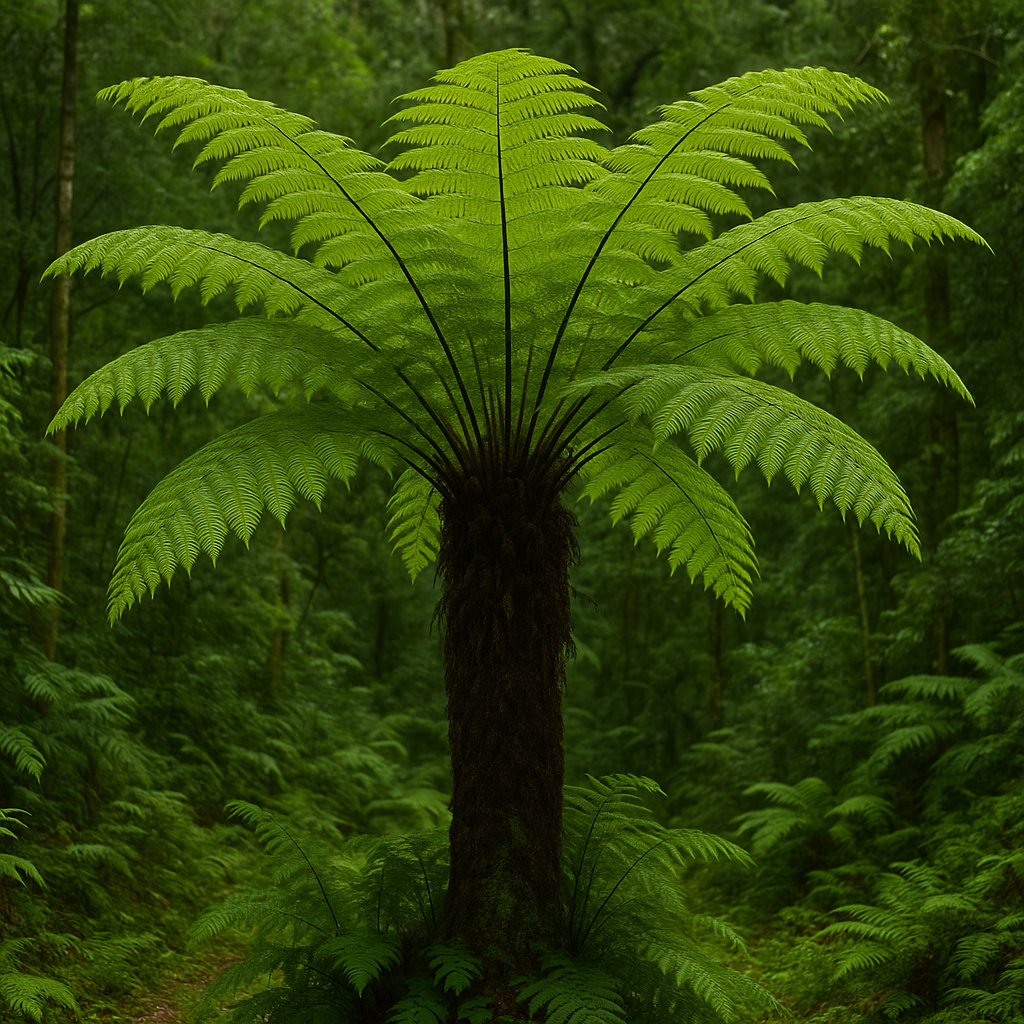The Samambaiaçu, also known as the tree fern or xaxim in Brazil, is one of the most iconic plants of the Atlantic Forest. This giant fern species stands out for its impressive size, exotic beauty, and vital ecological role. In this SEO-optimized article, you’ll learn everything about the Samambaiaçu: its features, habitat, curiosities, cultivation tips, and environmental importance.
What is Samambaiaçu?
The word Samambaiaçu comes from the Tupi-Guarani language: “samambaia” meaning fern, and “açu” meaning large — together, “giant fern.” This name refers to a group of arborescent pteridophytes, which are ferns with upright, woody stems that can grow up to 5 meters tall.
The most common species belong to the Dicksonia and Alsophila genera, such as Dicksonia sellowiana. Its thick, fibrous “trunk” is a modified stem, popularly known as xaxim, once widely used in gardening to support orchids and bromeliads.
Characteristics of the Samambaiaçu
- Height: Typically reaches between 2 and 5 meters.
- Trunk (xaxim): Thick, rough, and rich in organic material.
- Fronds (leaves): Large, arching, and lace-like in appearance.
- Reproduction: Through spores located on the undersides of the leaves.
- Growth rate: Very slow, only a few centimeters per year.
This ancient plant has been around since the time of the dinosaurs, making it a true living fossil of Brazilian flora.
Natural Habitat
Samambaiaçu is native to the Atlantic Forest biome, especially in southern and southeastern Brazil. It thrives in shady, humid areas with rich, organic soil. It is also found in parts of Paraguay and Argentina.
Typical environments:
- Araucaria forests
- Cloud forests and moist slopes
- Protected environmental reserves
Ecological Importance
The Samambaiaçu plays a vital role in its ecosystem:
- Hosts epiphytes: Bromeliads, orchids, and mosses often grow on its trunk.
- Moisture retention: Helps maintain a stable microclimate.
- Soil protection: Prevents erosion and promotes forest regeneration.
- Wildlife shelter: Provides habitat for insects, frogs, and small animals.
Because of this importance, harvesting wild tree ferns is illegal in many parts of Brazil.
The Use and Ban of Natural Xaxim
For decades, the fibrous trunk of the Samambaiaçu — natural xaxim — was widely used in horticulture. However, due to overharvesting, the species became endangered, especially in the 1980s and 1990s.
Today, the sale of wild xaxim is banned in Brazil. Sustainable alternatives like coconut fiber xaxim or eco-friendly substrates are now used to mimic its properties without harming native plants.
Legal and Sustainable Cultivation
Samambaiaçu can only be cultivated and sold if grown in licensed nurseries and propagated through asexual reproduction.
Tips for legal and sustainable growing:
- Light and humidity: Prefers partial shade and high humidity.
- Soil: Rich organic mix with leaf compost and sand.
- Watering: Needs regular watering to keep the soil slightly moist.
- Ideal locations: Shaded gardens, covered patios, or greenhouses.
- Avoid direct sun: Fronds are delicate and burn easily in strong sunlight.
Keep in mind: it’s a slow-growing plant that demands patience — perfect for forest-style gardens.
Fascinating Facts About Samambaiaçu
- Used by Indigenous peoples as a natural antiseptic and water source protector.
- Its botanical name Dicksonia sellowiana honors German botanist Friedrich Sellow.
- Some specimens in protected forests are over 100 years old.
- Once endangered, the species is now being successfully reintroduced in restoration areas.
Samambaiaçu in Sustainable Landscaping
Because of its lush, tropical appearance, the Samambaiaçu is a favorite in eco-conscious landscaping. When sourced responsibly, it adds both aesthetic beauty and environmental value to gardens.
If you’re looking for a plant with presence, history, and environmental impact, Samambaiaçu is an excellent option — just make sure it comes from a legal, certified nursery.
Conclusion
The Samambaiaçu is a living monument of Brazil’s natural history. With its unique structure, slow growth, and ecological significance, this ancient fern is much more than just a decorative plant — it’s a symbol of environmental resilience. By cultivating it responsibly, you not only enhance your garden but also contribute to the conservation of native species.
🌱 Support native biodiversity. Grow responsibly. Protect our forests.


